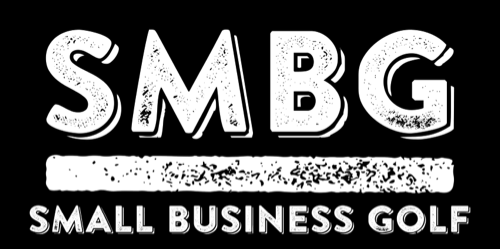Great new year resolutions for golf course owners and managers
Add flexibility to how you sell tee times
To appeal to a broader range of golfers, flexibility in tee times is key. This isn’t about changing intervals as that’s more about your brand than flexibility - this is about the willingness to sell the same starting time in different ways, based upon who’s most interested and able to buy the tee time. Some of this relies on you thinking outside the box and knowing what your goal is. Is the goal to run the most successful golf course you can for an extended number of years? If yes, keep reading.
If there are 20, 40, 80 golfers in your trading area (market, city, etc.) that are willing to pay a premium (more than you typically charge) for a weekly tee time (same day of week, same time of day) you should sell it to them regardless of breaking your booking window rules. That’s tee time flexibility.
Can you sell tee times during the first hour you’re open that start on number 9, 10 or 11? Can those tee times be for 9 holes, 6 holes, 5 holes or 4 holes? If your golf course can accommodate that, you and your greens crew should work together and try to do it. That’s tee time flexibility.
Tee time flexibility can include increased booking windows for loyalty groups and/or golfers who purchase advanced booking access.
Tee time flexibility can include ideas like FLING GOLF - a group of Fling Golfers between two groups of traditional golfers should not be a problem for any golf course that uses a flexible approach to selling tee times. Nor should league golf, supported by an organization like SPARK GOLF.
Think of tee time flexibility like this: Tee time flexibility allows you the golf course manager to offer the right tee time to the right golfer for the right price. If you sell some permanent tee times, it doesn’t mean you can’t or won’t sell traditional tee times next to the permanent ones but by offering the permanent tee time you were able to capture a larger share of wallet from a dedicated group of golfers.
2. Dynamic Pricing for Tee Times
Implement dynamic pricing strategies for tee times. Just like airlines and hotels, golf courses can benefit from adjusting prices based on demand, weather, and seasonality. This strategy can optimize revenue and attract more players during off-peak times. By now, if you’re not pricing your tee times dynamically it’s for one of a few reasons, none of which include you haven’t heard of the idea.
As a customer, you may not like dynamically priced anything. You inherently feel like someone is taking advantage of you and you don’t want to do that to others.
You don’t like change, you fear change or you fear the impact change will have on your staff/customers.
Your current tee sheet technology (of lack thereof) keeps you from properly implementing dynamic pricing.
Pricing dynamically creates a lot of wins for the golf course and the golfer. When properly implemented it tends to extend your advanced bookings (be sure to set-up your strategy to increase rate before expiration and your golfers will catch-on quickly). It helps you earn the revenue you deserve through the hard work you and your team put in and it generally helps you find new golfers through affordable options you haven’t explored.
As for dynamic tee time pricing technology, there’s no better option than Sagacity Golf. Sagacity works well with several technology vendors and they are already a trusted partner for hundreds of golf courses. Oh, and if you're not presently accepting tee times and/or selling them online, do that too. 😟
3. Measure Tee Sheet Performance with Key Performance Indicators (KPIs)
Tracking KPIs like Revenue per Available Round (RevPar) and Effective Revenue can offer deep insights into your tee sheet's performance. Break down these metrics by days, day parts, and hours to understand peak performances and areas needing improvement. Here’s a sample of one day. We’ve known for 20+ years how dangerous it is to only report on average rate and rounds played. We want to know what the average rate was compared to the total number of available rounds. We should also begin (if not already) tracking EXPANDED REVENUE. Expanded revenue is revenue added to the business without creating cost beyond play and carts. Perhaps it’s back nine starts you’ve not previously attempted to sell or maybe it’s a tee time license or rights fee.
4. Weekly Recap Email with KPIs
Send your team a weekly recap email that includes key metrics. This practice keeps everyone informed about the course’s performance and helps in making data-driven decisions. "What gets measured gets managed." This aphorism is frequently attributed to the renowned management consultant Peter Drucker, although the exact phrasing might not be his. The essence of this saying is that by measuring something, you are putting it in a position of importance, and therefore, more likely to pay attention to it and manage it effectively.
Another similar saying is, "If you can't measure it, you can't manage it." This emphasizes the importance of having quantifiable metrics in management, as it's challenging to manage or improve something without having a way to measure its performance or impact.
Both these sayings highlight the crucial role of metrics and data in effective management, suggesting that measurement is a key step in the process of understanding, controlling, and improving business operations or performance in various areas.
5. Create a Detailed Menu
Write a comprehensive menu of what's to be sold at your course, including services and amenities. This clarity helps when developing sales strategies and forecasts. Push yourself here. At smb GOLF we believe there’s $100,000 of latent revenue at at least 80% of public golf courses. How’s your upselling at check-out (both in-person and online)? When you write the menu, consider sharing it on your website. Be sure to use great sales copy. Our view: the Rates page on the website is your online tee time booking engine and a new tab appears, MENU. The menu tells the story of what you sell and why they’ll want it and love it. Need to replace that old price board behind your counter? Replace it with your menu. READ THIS FOR MORE DETAILS
Create a golf menu, internal or external - either way it helps
6. Build a Monthly Tee Sheet Forecast
Using historical performance and the detailed menu, construct a tee sheet forecast for every month of the year, with weekly breakouts. This forecast should include KPIs to track progress and identify trends. A few things to consider:
Golf Course Monthly Rounds and Revenue Forecast
A. Executive Summary. Brief overview of the forecast's purpose and key insights.
B. Forecast Overview
Time Period: [Month, Year]
Key Assumptions: List the primary assumptions used in the forecast (e.g., weather conditions/playable days, economic indicators).
C. Historical Data Analysis
Rounds Played (Previous Year(s)): Monthly comparison.
Revenue (Previous Year(s)): Breakdown by revenue streams (e.g., green fees, memberships, pro shop sales)
Revenue (Previous Year(s)): Breakdown by revenue channels (e.g., pass holders, marketplaces, events, license holders).
D. Competitor Activity. Overview of significant competitor actions.
E. Detailed Monthly Forecast
Rounds Played Forecast: Breakdown by week.
Revenue Forecast: Detailed by revenue streams (e.g., green fees, cart rentals, pro shop, food and beverage).
Revenue channels (e.g., pass holders, marketplaces, events, license holders).
F. Conclusion and Recommendations. Final thoughts and strategic recommendations based on the forecast.
7. Develop a Sales and Marketing Plan Based on the Forecast
Utilize the forecast to build a targeted sales and marketing plan. This plan should aim to fill slow times, promote popular time slots, and introduce new offerings effectively. Write this plan AFTER you complete your annual or semi-annual forecast.
A forecast, often developed as part of a comprehensive business plan, helps in understanding the market demand, potential customer base, and the expected revenue. This information is crucial for a sales and marketing plan because it provides a foundation of what you are aiming to achieve in terms of market penetration and revenue goals.
Creating a sales and marketing plan for a golf course involves a strategic approach that addresses key aspects of the business and its market. The plan should be clear, comprehensive, and actionable. The plan can be expansive but be sure to at least include the following:
Primary targets for the sales and marketing efforts.
Branding and Positioning: How the golf course will be positioned in the market.
Pricing Strategy: Pricing models for different services (e.g., memberships, green fees).
Promotional Activities: Advertising, promotions, and special offers.
Digital Marketing: Website, social media strategy, email marketing.
Partnerships and Sponsorships: Collaborations with local businesses or events.
Events and Tournaments: Hosting and marketing special events.
Membership Sales: Strategies to attract and retain members.
Group and Corporate Sales: Approaches for attracting corporate events, leagues, and group bookings.
Merchandising: Sales strategies for the pro shop and other merchandise.
Detailed Budget: Breakdown of the marketing budget across different activities.
Action Plan: Timeline for implementing various strategies and campaigns.
8. Know Your Golfer Data
Understanding your customers is critical. Aim to capture at least 75% of your golfers' email addresses or other unique identifiers. This data is invaluable for tracking the number of rounds each golfer plays weekly, monthly, and annually, as well as their spending habits. Utilizing this data effectively aids in designing tailored reward and loyalty programs, enhancing customer engagement, and increasing repeat business. Oh, and if you're not presently recording every single round played on your course in your tee sheet, do that too. 😟
9. Be Prepared to Sell the Golf Course
Even if selling the golf course isn't on your immediate agenda, it's wise to be prepared. Organize and maintain detailed records so that you can present critical data within 72 hours if a prospective buyer emerges. This data should encompass revenue and supporting KPIs broken down by channel (source) and player type. Additionally, prepare a high-level capital expense plan for the next 24 and 120 months. Having this information readily available not only prepares you for potential sale opportunities but also helps in strategic planning and understanding the long-term health and viability of your golf course.
Incorporating these resolutions into your management strategy can significantly enhance your ability to run a successful and profitable golf course. IT’S NOT REALISTIC TO ADD ALL OF THESE IN ONE YEAR. Don’t try to do that. What’s the best first step? Add 1, 3, and 4.
By focusing on data-driven decisions, customer understanding, and being prepared for future opportunities, you can ensure your golf course remains competitive and prosperous in the new year and beyond.
smb GOLF is happy to help you.
Please contact us if you want to learn more about and explore how we can help you. Keep in mind, you don’t pay us if we don’t make you more money. See details here: https://www.smbgolf.com/2500-guarantee


